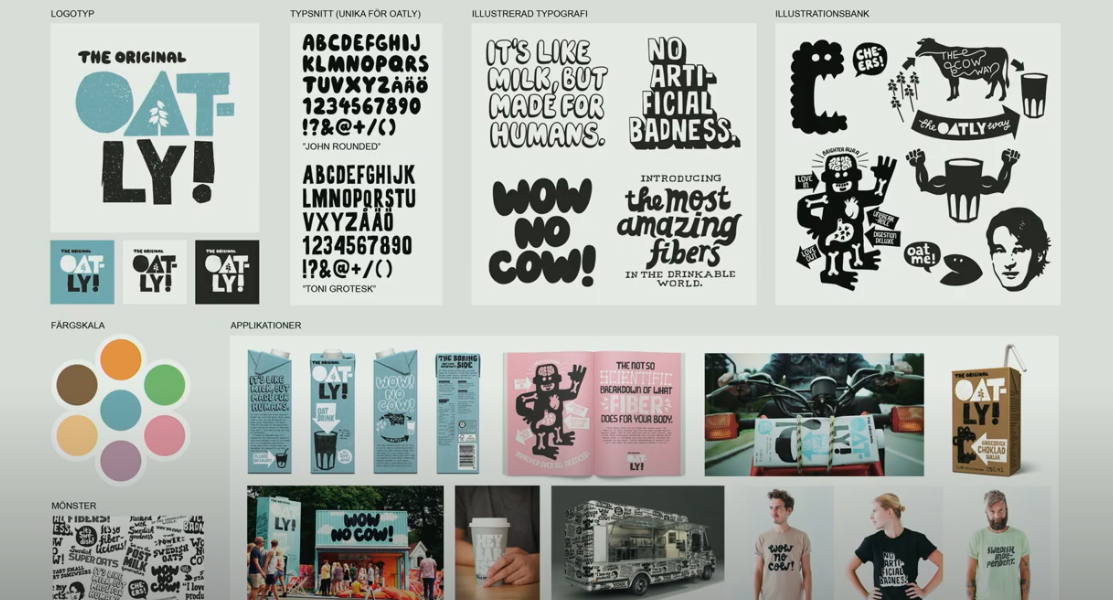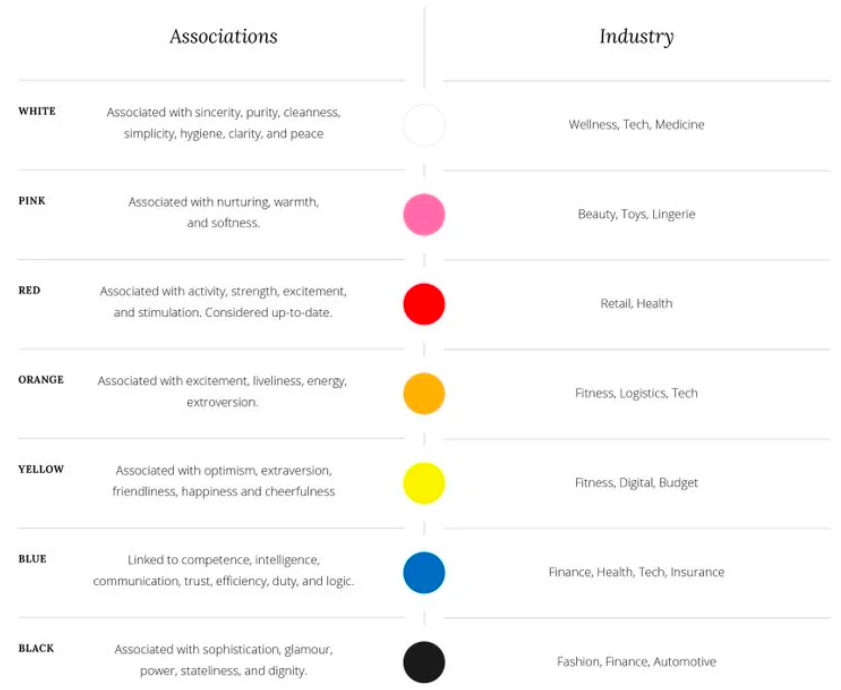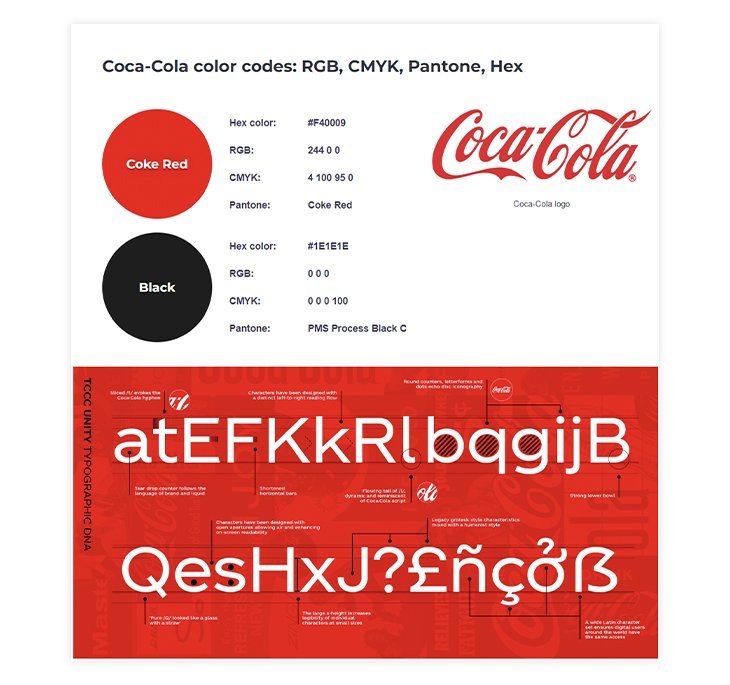Product branding involves creating a unique identity and building a brand around a singular product. This includes everything from symbols and brand marks to graphics and color palettes. To construct a product branding strategy, businesses need to recognize their target audience and leverage existing brand marketing materials.
Product branding is an essential part of a company’s overall branding strategy. It focuses on how individual products are differentiated and stand out to customers.
Product branding is a type of branding that determines the key, consistent branding elements for a single product, ensuring that your company’s vision is accurately communicated to customers every time they interact with the product in stores or online.
Product branding elements can include:
- Symbols or brand marks
- Color palettes
- Graphics
- Patterns
- Other creative design materials that formulate a product’s brand identity
These components contribute to the product’s ability to be recognized by customers over time.
Product branding is different from creating a company or personal brand. Its narrow focus challenges branding directors to construct a unique identity for a singular product.
Marketing teams must pay close attention to product branding best practices to achieve a successful strategy:
- Clarifying goals
- Defining an audience
- Emphasizing mission and values
- Referecing branding standards
Identify Product Goals and Vision
You may already have determined goals and visions for your corporate brand, but it’s important to give individual products the same treatment in order to develop a distinct product branding identity.
This is your chance to lean into the service gap that your product was designed to fill. Think about:
- Why your team developed this product in the first place
- What problems you set out to solve
While brainstorming the value proposition for your product, spend time tying product goals back to your overall company. Goals for your product may be more specific than those of your business as a whole, but you should be able to recognize the connection between product goals and company mission.
Taking this step early will avoid customer confusion when confronting your product in the marketplace.
Define an Audience
Every product has a targeted audience. During the development phase, you should have designated a group of people that your product will serve. Your audience is the group of people with the need that your product solves. Because they need your product’s solution, they’re the most likely candidates to purchase your product.
This is where product branding tactics become important. Once you’ve identified your audience’s target ages, backgrounds, genders, financial situations, or locations, you can structure your product branding and design around your target demographic’s preferences.
Oatly generally targets young consumers who want alternatives to milk and dairy products. Their product branding and designs are fresh, colorful, and successful in exemplifying the company’s rebellious side.

Source: Kevin Lee
By defining and understanding what their audience wanted from an alternative milk product, Oatly created engaging product branding materials that accurately represented their company while strategically appealing to their intended audience.
Highlight Mission and Values in Design
To promote consistency in your product branding efforts, consider your company’s mission and values when selecting design elements for your product.
Representing your broader company brand within your product branding efforts can sound like a tall order. However, if you can tie your product back to high-level values and concepts, it may better resonate with your audience.
One way to represent company values within product branding designs is to be discerning about color palette selection. Specific colors have different psychological effects on consumers, causing them to associate colors with different feelings or ideas.

Source: Canva
For instance, white is associated with simplicity, while blue generally represents trust and logic. It’s not surprising that tech companies like Apple and Facebook flock to these colors to brand themselves to audiences.
While color selection won’t represent your company values on its own, but it provides a solid foundation for iterating on your product branding strategy.
Lean on Company Branding Standards
If you’re a company launching a new product, it’s likely that you already have a developed brand and branding kit for your business.
You can lean into the successful, recognizable aspects of your existing brand to connect your product branding to your company. That will provide a foundation for your product branding design process.
For instance, Coca-Cola has one of the most well-known, established logos that audiences connect to the larger brand. The company logo functions as a critical component of product branding for its soft drinks and other merchandise.

Source: Flipsnack
The unique, wavy typography differentiates the company from others in the market, making it an ideal element for product branding.
If you already have an established brand identity, it’s a good idea to represent it within your product branding. That way, the product will be logically linked to your larger brand and will develop a trust audience more quickly.
If you want to develop a new logo, consider partnering with an establishing logo design agency who can help navigate your approach.
Craft Product Branding Guidelines and Stick to Them
After thoroughly examining your goals, audience, values, and current branding materials, it’s time to execute product branding guidelines.
At this point, some companies may want to take their research to a brand consulting firm. Partnering with industry experts will help you reach a professional creative brand book faster and allow external feedback on elements throughout the process.
If you are confident about creating the brand guidelines on your own, there are plenty of free templates and platforms you can use to build product branding standards. Many of these platforms are also accessible for non-technical users.
Once you have your product branding guidelines set, it’s important to stick to them. Consistency is key when marketing a new product. By maintaining a consistent look, you’re helping your product attain consumer trust and loyalty over time.
Strategic Product Branding Helps You Stand Out
Product branding best practices will help you stand out from competitors in the market. Practical guidelines will aid your product in communicating your intended mission to a target audience and have it successfully resonate.
To make an impact on your audience, you must put time and effort into planning the execution of product branding. Before launching your new product in stores, be sure to consider goals, target audiences, the company mission, overall company branding, and the importance of consistency. From there, you’re on your way to a successful product branding effort.